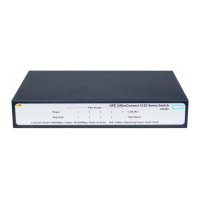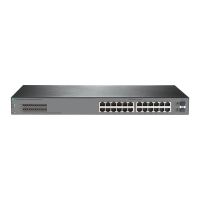36
Creating a DHCP user class
About DHCP user class
The DHCP server classifies DHCP users into different user classes according to the hardware
address, option information, or the giaddr field in the received DHCP requests. The server allocates
IP addresses and configuration parameters to DHCP clients in different user classes.
Procedure
1. Enter system view.
system-view
2. Create a DHCP user class and enter DHCP user class view.
dhcp class class-name
3. Configure a match rule for the DHCP user class.
if-match rule rule-number { hardware-address hardware-address mask
hardware-address-mask | option option-code [ ascii ascii-string
[ offset offset | partial ] | hex hex-string [ mask mask | offset offset
length length | partial ] ] | relay-agent gateway-address }
By default, no match rule is configured for a DHCP user class.
Configuring an address pool on the DHCP server
DHCP address pool tasks at a glance
To configure a DHCP address pool, perform the following tasks:
1. Creating a DHCP address pool
2. Specifying IP address rang
es in a DHCP address pool
In one DHCP address pool, the two dynamic allocation methods cannot be both configured, but
static and dynamic address allocations can be both implemented.
{ Specifying a primary subnet and multiple address ranges in a DHCP address pool
{ Specifying a primary subnet and multiple secondary subnets in a DHCP address pool
{ Configuring a static binding in a DHCP address pool
3. Specifying other configuration parameters to be assigned to DHCP clients
{ Specifying gateways for DHCP clients
{ Specifying a domain name suffix for DHCP clients
{ Specifying DNS servers for DHCP clients
{ Specifying WINS servers and NetBIOS node type for DHCP clients
{ Specifying BIMS server for DHCP clients
{ Specifying the configuration file for DHCP client automatic configuration
{ Specifying a server for DHCP clients
{ Configuring Option 184 parameters for DHCP clients
{ Customizing DHCP options
4. (Optional.) Configuring the DHCP user class whitelist
Creating a DHCP address pool
1. Enter system view.

